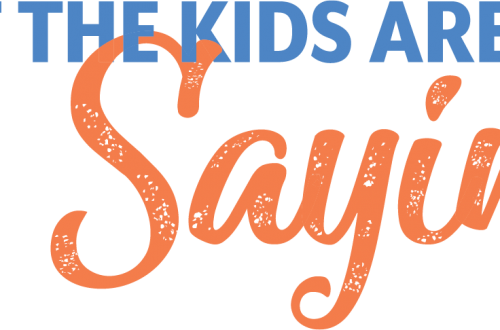In my previous article last month, I addressed how affirmative action really affects college admissions by creating substandard classes and dumbing down our best universities.
Instead of giving free passes to students who meet ethnic and socioeconomic numbers, let’s level the playing field so all students have similar opportunities to compete for admission based on merit. We need to start teaching academic skills in preschool and offer cutting-edge courses in K-12. Remember there are over 4,000 colleges in the United States, and most will accept all applicants. For the sake of this article, we are only addressing the super selective colleges with acceptance rates below 10%.
Academic preschool for all
We need to offer FREE academic preschool programs for all children. The poor, inner-city students should have the opportunity to learn reading readiness skills at 3 years old and be reading chapter books by the time they enter kindergarten — just like the wealthy students. Teachers should be paid more to teach in inner city schools and be paid bonuses when their students reach or surpass grade-level standards and/or win science fairs.
Set up your own preschool
Parents can set up free preschool enrichment programs for their children in their homes. This will give their children a solid academic foundation before entering kindergarten. I successfully did this for 9 years and my daughters went to Stanford University and Claremont McKenna College. By inviting 3-4 tuition-paying students to cover the costs, hosting families receive free preschool for their children.
That means that all children can experience the crème-de-la-crème preschool that only rich kids receive today. This model also works for elementary, middle, and high school students. Parents can set up after-school support to build critical reading, essay writing, and math skills. Hosting families receive these services for free. Check out my book and the curriculum.
Improve K-12 education
Enhance the quality of education in primary and secondary schools is crucial to prepare students for college. Providing modern resources, qualified teachers, and an academic and STEM curriculum can help bridge the educational gap between the haves and the have-nots. Teachers should be paid double what they make today.
We have a massive teacher shortage across the United States – college students don’t aspire to become teachers because they don’t want to live in poverty.
Encourage students to do projects
Schools can set up mentorship programs with retired professionals to guide students as they brainstorm, initiate, and complete projects. This exposure can introduce students to lucrative careers and fascinating college majors. Projects give all students the opportunity to build their portfolios and increase their odds of admission to top colleges.
Expand pre-college programs
Implement pre-college programs, such as academic enrichment programs, mentorship initiatives, and college preparatory courses, can help disadvantaged students gain the necessary skills and knowledge to succeed in college. These programs can offer guidance on the college application process, standardized testing, and financial aid options.
Increase financial aid
Access to financial aid is a significant barrier for many students seeking higher education. Increasing the availability of need-based scholarships, grants, and loans can alleviate the financial burden and make college more affordable for students.
Target support for underrepresented groups
Address historical inequalities. Specific support programs can be developed for underrepresented groups, including Black, Hispanic, Native American, and first-generation college students. These programs can offer mentorship, academic support, and resources tailored to their unique needs and challenges.
Strengthen community college pathways Community colleges can bridge the gap between high schools and a 4-year colleges. Enhancing transfer pathways to provide academic support and ensure seamless credit transfers can facilitate a smoother transition to bachelor’s degree programs.
Expand student bodies at selective colleges
If these high-demand colleges opened up 50% more spaces each year, it would take off some of the pressure to select under-represented ethnic students who may not meet admission standards. More spaces could allow for a more diverse student body. With the massive endowments these selective colleges have, building more dorms and classrooms wouldn’t put a dent in their budgets. Besides, more students means more tuition.
These are 9 ways to level the playing field for admission to the top universities so that all children receive the academic and social exposure needed to prepare them for higher education.
Students should be able to take advantage of early reading and math preschool programs so they can excel in K-12. By having access to excellent teachers (regardless of your zip code) and programs to prepare them for the rigorous college admissions process, qualified students will not be a concentrated group of upper class and White/Asians.
In an ideal world, during senior year of high school, colleges should admit students based on their academic prowess, innovation, and what unique characteristics they will add to the incoming freshman college class – not their ethnicities.
Susan Tatsui-D’Arcy is the founder of Merit Academy (one-on-one classes)and Merit Educational Consultants (college and educational advisory). She has written books on projects, free child care, education, and parenting. Susan hosts TEDxMeritAcademy for students to present their innovative projects and solutions. In 2019, she was California Mother of the Year.meritworld.com








